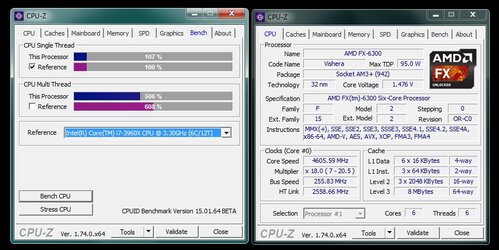Hi,
I'm trying to raise my BCLK value from its stable 255MHz & have tried raising the following on the mobo in my signature, the ones listed as 'auto' I have not touched yet:
CPU/NB manual voltage = 1.31250
CPU VDDA = 2.62500
DRAM = 1.510 (memtest86+ stable) and stable in Windows.
NB Voltage = 'auto' (1.110v listed as current value)
NB HT voltage = 'auto' (1.20v as current value)
NB 1.8v = 'auto'
I'm not sure what values the board aims for when 'auto' is selected for those options I have listed.
Reading around the traps indicates raising NB voltage to 1.20v is safe with air cooling and can help with high BCLK or FSB values, but raising this to 1.20v doesn't produce any more stability than when left on auto, that is IF I raise the BCLK any higher than its current 255 value. I have my NB frequency and HTT set to sync with the BCLK value, that is "255" across the board (if you know what I mean, so NB frequency becomes 2550 etc..
What other options can I fiddle with to get it stable at say 260MHz? Just to get it set at 2600 NB and subsequently HTT value
Thanks in advance.
I'm trying to raise my BCLK value from its stable 255MHz & have tried raising the following on the mobo in my signature, the ones listed as 'auto' I have not touched yet:
CPU/NB manual voltage = 1.31250
CPU VDDA = 2.62500
DRAM = 1.510 (memtest86+ stable) and stable in Windows.
NB Voltage = 'auto' (1.110v listed as current value)
NB HT voltage = 'auto' (1.20v as current value)
NB 1.8v = 'auto'
I'm not sure what values the board aims for when 'auto' is selected for those options I have listed.
Reading around the traps indicates raising NB voltage to 1.20v is safe with air cooling and can help with high BCLK or FSB values, but raising this to 1.20v doesn't produce any more stability than when left on auto, that is IF I raise the BCLK any higher than its current 255 value. I have my NB frequency and HTT set to sync with the BCLK value, that is "255" across the board (if you know what I mean, so NB frequency becomes 2550 etc..
What other options can I fiddle with to get it stable at say 260MHz? Just to get it set at 2600 NB and subsequently HTT value
Thanks in advance.
